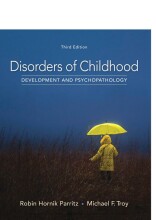Externalizing Disorders - Substance Use & Gambling Disorders - Substance Use
35 important questions on Externalizing Disorders - Substance Use & Gambling Disorders - Substance Use
Why is alcohol use or abuse by adolescents of particular concern?
- Relatively high incidence
- Specific detrimental effects on adolescent brain development
- It’s association with impairment in personal, academic & social domains of development
What does the progression look like for most drugs?
- Exposure
- Experimentation
- Regular use
- Abuse and dependence
What does the gateway hypothesis entail?
- Higher grades + faster learning
- Never study anything twice
- 100% sure, 100% understanding
What does the common factors model entail?
What does the cascade model entail?
What does the genetic model entail?
What does the incentive-sensitization theory entail?
- The effect of substances on brain function
- How altered brain function affects response to motivation & reward stimuli
What are other factors related to substance use?
- Conduct problems & depression
- Self-medication (using drugs to improve mood problems due to other disorders)
- Parental expectations & practices are a powerful influence
- Peer attitudes supporting substance abuse
What does abuse entail according to the DSM-4?
- Mostly social consequences (not fulfilling responsibilities)
- Use in dangerous situations
- Legal problems
What does dependence entail according to the DSM-4?
What is the difference between the DSM-4 and DSM-5 classification in regard to substance use?
They now use a ‘sumscore'
What are the criteria for SUD?
- Impaired control
- Social impairment
- Risky use
- Pharmacological criteria
What is meant by impaired control?
- Use more/longer than intended
- Strong cravings
- Failing to quit
- A lot of time spent on getting/using/recovering from the drug
What is meant by social impairment?
- Ongoing SU leads to inability to meet responsibilities
- Important school/work/recreational activities are abandoned/reduced
- Ongoing SU despite recurring social/relational difficulties
What is meant by pharmacological criteria?
- Tolerance develops
- Withdrawal effects show
- SU relieves symptoms of whitdrawal
What are 5 types of substances that are abused?
- Depressants
- Stimulants
- Opioids
- Hallucinogens
- Cannabis
What are the effects of depressants?
- Slows down CNS
- Relaxation
- Less concentration
- Impaired judgement/thinking/motor skills
What are examples of depressants?
- Alcohol
- Benzodiazepines
- Barbiturates
- Inhalants (laughing gas/glue)
What are the effects of stimulants?
- Activates CNS
- Energetic
- Happy
- Less desire for sleep & less appetite
- Increased heart rate & blood pressure
- Dilated pupils
- Dopamine release (rewards & pleasure),
What are examples of stimulants?
- Cocaine
- Amphetamines
- Nicotine
- Caffeine
What are the effects of opioids?
- Pain reliever
- Strong addictive effect
- Euphoria, thrill
- Drowsiness
- Slurred speech
- Confusion
- Can suppress respiratory & cardiovascular system
What are the effects of hallucinogens?
- Perceptual illusions, distortions
- Synesthesia
- Psychedelic
- Bad trips may cause anxiety
- Behavior may look psychotic & aggressive (especially true for PCP)
What are examples of hallucinogens?
- LSD
- Mushrooms
- PCP (angel dust)
What are the effects of cannabis?
- General well-being
- Relaxation
- Sleepiness, dreamy
- Everything’s funny
- Cognitive distortions (memory, motor functions)
- Deregulated heart rate
- Increased appetite
- Dry mouth
- Perceptual distortions
- Depersonalization
- Paranoid thinking
What is an example of a substance that is both a stimulant and a hallucinogen?
- XTC
- MDMA
What is an example of a substance that is both a depressant and a narcoleptic?
What is an example of a substance that is both a anesthetic and a hallucinogen?
What is an example of a substance that is both a sedative and a hallucinogen?
What are biological factors related to SUD in adults?
- Pleasure/reward pathway
- Is sensitive to the dopamine effect of drugs
- Makes you need more drugs for the same reward after some time
- Stress
- Increases craving for the drug & the reward you experience
- Disrupted impulse control in the frontal brain
- Genetic factors influence drug effects
What are psychological factors related to SUD in adults?
- Social learning theories
- modeling of parents, siblings, peers
- Cognitive theories
- positive expectations of SU leads to more SU
- Personality factors
- behavior under control
- impulsivity
- sensation seeking
- antisocial
What are sociocultural factors related to SUD in adults?
- There is more SU in people with low SES (except for expensive drugs such as cocaine)
- More problematic relationships with abuse & problematic parental relations in low SES
- Government influence through policy & legislation
- Men use more than women, but women suffer more from some physical negative effects
What are important tools when it comes to assessing and diagnozing SED?
- Assessing for & treating comorbid psychopathologies is important
- Multifactorial etiology of substance abuse requires a full assessment of psychological functioning
- Self-report inventories have demonstrated utility
What are the different kind of treatments available for SED?
- Relapse prevention
- Outpatient, inpatient or day program treatments
- Motivational interviewing
- School & juvenile justice-based treatment programs
- Medication
- Psychosocial treatment
- AA & 12-strep program or other self-help groups
What does motivational interviewing as a treatment entail?
- Motivational psychology
- Client-oriented therapy
- Stages of change theory
- Motivating to change habits
What does psychocial treatment entail?
- CBT
- Covert sensitization therapy
- learning to associate SU with negative consequences
- Contingency management
- improving someone’s context e.g. housing, employment etc.
The question on the page originate from the summary of the following study material:
- A unique study and practice tool
- Never study anything twice again
- Get the grades you hope for
- 100% sure, 100% understanding































